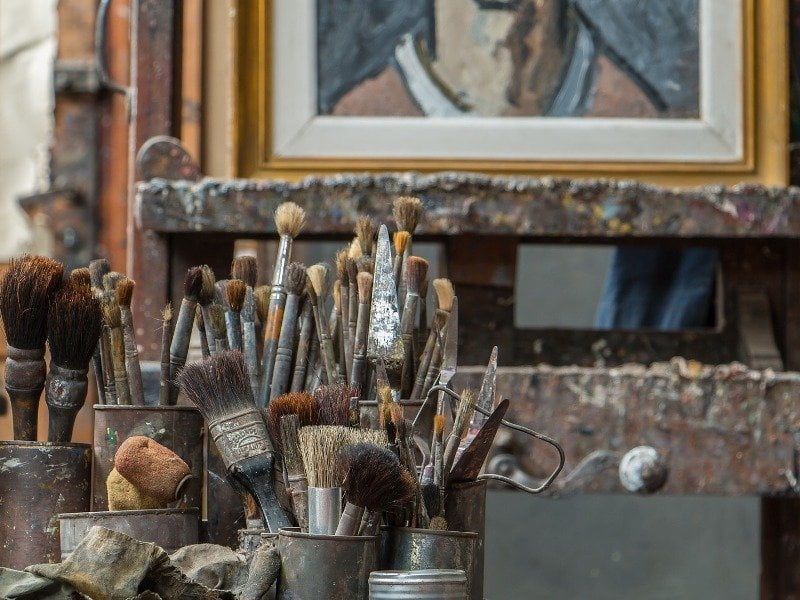Paul is a highly experienced, creative and tenacious litigator
paul.russell@russell.nl +31 20 301 55 55What exactly is art forgery? How can you prevent to buy a forged work of art? And what can you do when it turns out you have unexpectedly bought a fake artwork?

Rumour has it that 20% of the fine art traded in the Netherlands is false. Also on an international level, there are often scandals regarding forged modern artists, such as Pablo Picasso, Jackson Pollock and Mark Rothko. The high prices charged for their works and the seemingly simple techniques they applied appeal to forgers. But what is forged art exactly? How can you prevent to buy forged art? And what can you do if it turns out you have bought a forgery?
A work of art is referred to as a forgery if it is attributed to another person than the creator of the work of art. This can be done in various ways, such as:
To prevent that a work is unmasked as a fake, mostly a combination of the above methods will be applied.
There is not always a clear boundary between false and authentic. In the following examples it is often difficult to determine whether it concerns a forgery:
Before making a purchase, perform a thorough investigation and lay down explicitly in the purchase contract what you intend to buy! If present, study the General Terms & Conditions, for instance of the auction house where you make the purchase. This way, you not only reduce the possibility of buying a forgery but you increase the chance of termination or annulment of the purchase contract in the unwished-for event the work of art turns out to be a forgery.
Try to gain as much information about the provenance of the work of art as possible. Is the work of art included in oeuvre catalogues of the artist? Is it known from exhibitions? Do experts authenticate it? If the word of the seller is the only source for the artist, the buyer has sufficient reason to doubt the authenticity.
Investigate the regular prices of works by the artist. Is the price right in view of the scope and quality of the work of art? Low price is often an indication that there is doubt as to the authenticity of the work and that means you should doubt it, too!
Unfortunately, buying a forgery cannot be entirely ruled out. Even artists sometimes don’t recognize forgeries of their own work, as, for instance, the Dutch abstract artist Karel Appel who issued certificates of authenticity for pieces made by Geert Jan Jansen. So what can you do if you find out your purchase is a forgery?
You can call to account the seller and dissolve the contract, or annul it by pleading error. In this case you must be able to prove that the work of art is forged and that you have fulfilled your duty of investigation. Whether the purchase can be dissolved or annulled depends on what has been included in the General Terms & Conditions of the purchase agreement, the level of expertise of the parties, considering all the circumstances of the case. Not every seller will agree to the annulment or dissolution of the sales contract. Russell Advocaten will gladly assist you to establish a sound and convincing file.
Would you like to learn more about forged art? Do you have any questions about the annulment or dissolution of a contract? Or do you have any other questions regarding art and law? Please contact Russell Advocaten:
The government has outlined in a letter how it intends to translate the proposals from the Buma Committee’s advice into regulations. What does this mean in practice for private individuals who own art or other cultural goods? But first: what are the rules for exporting protected cultural goods at the moment?
The government has outlined in a letter how it intends to translate the proposals from the Buma Committee’s advice into regulations. What does this mean in practice for private owners of art or other cultural goods? Will this solve the problems of owners?
The use of general terms and conditions is something companies can no longer do without. Contracting parties refer to their own general terms and conditions in small print, often containing favorable clauses for their own benefit. But what is the power of general terms and conditions? And what should be considered when using them?
In his interview on “Hidden Gems – Treasured artwork adds to allure of Netherlands”, Reinier Russell talks about how artworks still reflect the spirit of the Golden Age and where they can be found.
A new EU regulation requires anyone wishing to import cultural goods into the EU to have an import license or submit an importer’s declaration. When is which type of document required? How does it affect art dealers, galleries, auction houses and collectors, both inside and outside the EU?
An African mask that was sold for 150 euros fetched 4.2 million euros at an auction. Were the French sellers able to undo the sale? How would this case have ended in the Netherlands?